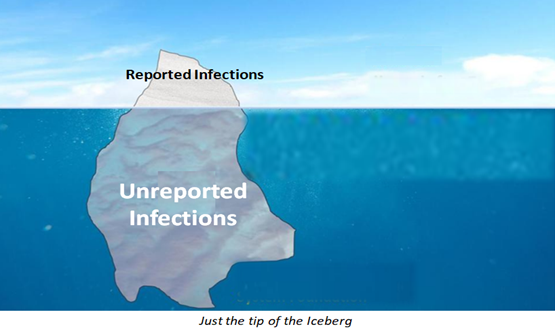
When infections spread, like malware in networks or diseases in society, not all individual cases are known. Networks may lack the latest detection means and, in society, infected individuals may be asymptomatic. Thus, the true number of infections in an epidemic could be much larger–a key point made by NIST researchers in Story of Two Populations in Epidemics: Is Every Infection Counted? recently published in Complex Networks & Their Applications X.
NIST researchers address the need to quickly determine the presence of undetected infections in a network so that they can be contained and treated. Their approach involves modeling populations' detected and undetected infections and their approximate transmission times, which vary (undetected cases transmit for longer times). The approach also calls for modeling a population with only detected infections and their approximate transmission times. The two modeling results are then compared to determine how significant the number of undetected cases might be.
NIST researchers applied this approach using publicly available COVID-19 data from France, Spain, the United Kingdom, and the United States, reported in each country at the beginning of the pandemic. Their findings suggest that there were significantly more infections than reported in all four countries. The U.S. Center for Disease Control estimated that only 1 in 4.2 cases or roughly 23.8 % of COVID-19 infections were reported in the U.S. – close to the NIST researchers' estimate of 22.1 %.

